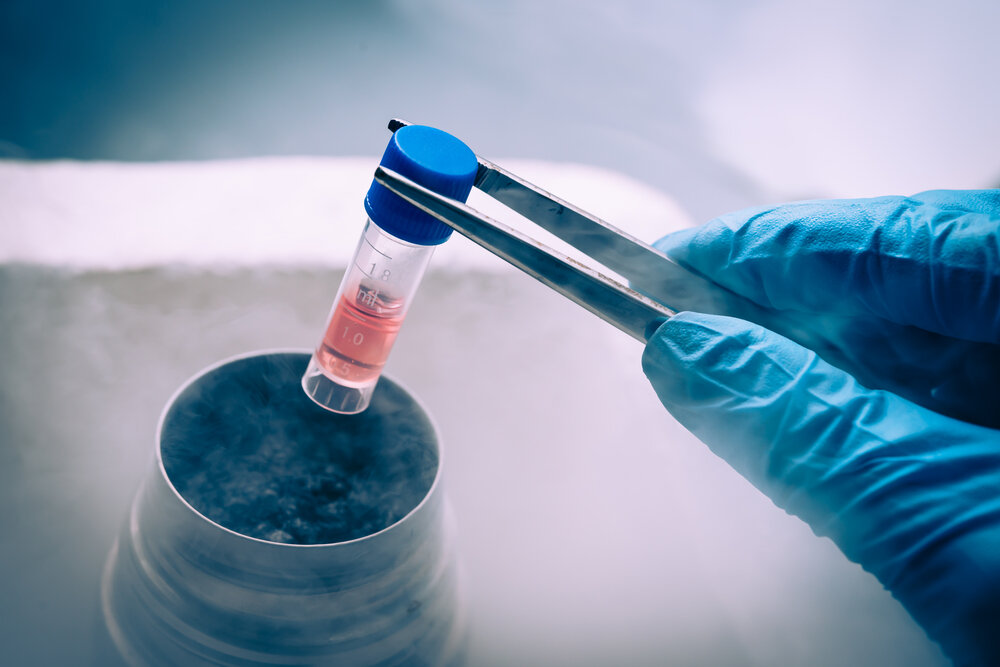Scientists use nanotechnology to detect bone-healing stem cells

Researchers at the University of Southampton have developed a new way of using nanomaterials to identify and enrich skeletal stem cells—a discovery which could eventually lead to new treatments for major bone fractures and the repair of lost or damaged bone.
Working together, a team of physicists, chemists and tissue engineering experts used specially designed gold nanoparticles to 'seek out' specific human bone stem cells—creating a fluorescent glow to reveal their presence among other types of cells and allow them to be isolated or 'enriched'.
The researchers concluded their new technique is simpler and quicker than other methods and up to 50-500 times more effective at enriching stem cells.
The study, led by Professor of Musculoskeletal Science, Richard Oreffo and Professor Antonios Kanaras of the Quantum, Light and Matter Group in the School of Physics and Astronomy, is published in ACS Nano—an internationally recognized multidisciplinary journal.
In laboratory tests, the researchers used gold nanoparticles—tiny spherical particles made up of thousands of gold atoms—coated with oligonucleotides (strands of DNA), to optically detect the specific messenger RNA (mRNA) signatures of skeletal stem cells in bone marrow. When detection takes place, the nanoparticles release a fluorescent dye, making the stem cells distinguishable from other surrounding cells, under microscopic observation. The stem cells can then be separated using a sophisticated fluorescence cell sorting process.
Stem cells are cells that are not yet specialized and can develop to perform different functions. Identifying skeletal stems cells allows scientists to grow these cells in defined conditions to enable the growth and formation of bone and cartilage tissue—for example, to help mend broken bones.
Among the challenges posed by our aging population is the need for novel and cost-effective approaches to bone repair. With one in three women and one in five men at risk of osteoporotic fractures worldwide, the costs are significant, with bone fractures alone costing the European economy €17 billion and the US economy $20 billion annually.
Within the University of Southampton's Bone and Joint Research Group, Professor Richard Oreffo and his team have been looking at bone stem cell-based therapies for over 15 years to understand bone tissue development and to generate bone and cartilage. Over the same time period, Professor Antonios Kanaras and his colleagues in the Quantum, Light and Matter Group have been designing novel nanomaterials and studying their applications in the fields of biomedical sciences and energy. This latest study effectively brings these disciplines together and is an exemplar of the impact collaborative, interdisciplinary working can bring.
Professor Oreffo said: "Skeletal stem cell-based therapies offer some of the most exciting and promising areas for bone disease treatment and bone regenerative medicine for an aging population. The current studies have harnessed unique DNA sequences from targets we believe would enrich the skeletal stem cell and, using Fluorescence-Activated Cell Sorting (FACS) we have been able to enrich bone stem cells from patients. Identification of unique markers is the holy grail in bone stem cell biology and, while we still have some way to go; these studies offer a step-change in our ability to target and identify human bone stem cells and the exciting therapeutic potential therein."
Professor Oreffo added: "Importantly, these studies show the advantages of interdisciplinary research to address a challenging problem with state of the art molecular/cell biology combined with nanomaterials' chemistry platform technologies."
Professor Kanaras said: "The appropriate design of materials is essential for their application in complex systems. Customizing the chemistry of nanoparticles we are able to program specific functions in their design.
"In this research project, we designed nanoparticles coated with short sequences of DNA, which are able to sense HSPA8 mRNA and Runx2 mRNA in skeletal stem cells and together with advanced FACS gating strategies, to enable the assortment of the relevant cells from human bone marrow.
"An important aspect of the nanomaterial design involves strategies to regulate the density of oligonucleotides on the surface of the nanoparticles, which help to avoid DNA enzymatic degradation in cells. Fluorescent reporters on the oligonucleotides enable us to observe the status of the nanoparticles at different stages of the experiment, ensuring the quality of the endocellular sensor."
Both lead researchers also recognize that the accomplishments were possible due to the work of all the experienced research fellows and Ph.D. students involved in this research as well as collaboration with Professor Tom Brown and Dr. Afaf E-Sagheer of the University of Oxford, who synthesized a large variety of functional oligonucleotides.
The scientists are currently applying single-cell RNA sequencing to the platform technology developed with partners in Oxford and the Institute for Life Sciences (IfLS) at Southampton to further refine and enrich bone stem cells and assess functionality. The team proposes to then move to clinical application with preclinical bone formation studies to generate proof of concept studies.





